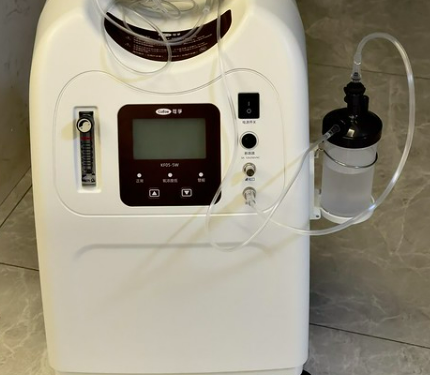Oxygen concentrators are essential medical devices for individuals requiring respiratory support. They offer a lifeline for patients with chronic lung conditions, providing crucial oxygen therapy at home or on the move. However, the safety of these devices is paramount, not just for the user but also for those around them. This blog aims to demystify oxygen concentrator safety, covering essential guidelines, common mistakes to avoid, and more.
What is an Oxygen Concentrator?
Oxygen concentrators are medical devices that process ambient air to provide oxygen in a concentrated form. It is a revolutionary alternative to traditional oxygen delivery systems, eliminating the need for regular oxygen refills. It is cost-effective and ensures an uninterrupted oxygen supply for long-term oxygen therapy patients.
How Oxygen Concentrators Work?
The core of an oxygen concentrator’s functionality lies in its sieve-bed filter system. This system comprises molecular sieves that absorb nitrogen from the air and channel the purified oxygen to the patient. It’s an intricate process: ambient air contains approximately 78% nitrogen and 21% oxygen, with the remaining 1% comprising other gasses.
The concentrator’s filters trap the nitrogen and other impurities, allowing the concentrated oxygen (up to 95% purity) to pass through. However, for the system to continue operating efficiently, these sieve beds need regular maintenance, including cleaning and replacement, emphasizing the necessity for users to understand their device’s specific maintenance requirements thoroughly.
You can check MainClinicSupply blog for more details on how oxygen concentrators function and the benefits they offer, especially in terms of maintenance and operational efficiency.
Types of Oxygen Concentrators
Oxygen concentrators come in two main forms: portable and stationary.
Portable Oxygen Concentrators (POCs)
Portable oxygen concentrators are lightweight and compact devices designed for active patients who require oxygen therapy while on the move. They are ideal for individuals who wish to travel, engage in outdoor activities, or maintain a busy lifestyle.
Stationary Oxygen Concentrators
Stationary oxygen concentrators are larger devices that deliver a higher oxygen flow rate, making them ideal for consistent and continuous oxygen therapy at home. They are reliable and provide a steady oxygen supply, making them a good choice for people who are mostly sedentary or spend a lot of time indoors.
Who Needs an Oxygen Concentrator?
Oxygen concentrators are not for everyone, but they are essential for people with certain health disorders that impede lung function, such as Chronic Obstructive Pulmonary Disease (COPD), asthma, or sleep apnea. These disorders can dramatically reduce blood oxygen levels, causing exhaustion, shortness of breath, and other serious health problems.
By providing a steady supply of concentrated oxygen, concentrators help mitigate these symptoms, thereby improving the patient’s overall quality of life. They allow individuals to manage their conditions more effectively, maintaining their independence and mobility for as long as possible.
Key Safety Guidelines for Using Oxygen Concentrators
When it comes to using oxygen concentrators, safety should always be the top priority. These life-saving devices provide essential oxygen therapy but have potential risks if used incorrectly. Here are some crucial safety considerations for patients using oxygen concentrators:
Proper Placement and Ventilation
Oxygen concentrators should be placed in well-ventilated areas to prevent the accumulation of oxygen-enriched air. They should also be kept away from heat or flame sources like stoves, candles, or heaters because oxygen can worsen flames.
Fire Hazards
Oxygen does not burn, but it promotes combustion. Therefore, keeping oxygen concentrators away from flammable materials, including oils, grease, and aerosol sprays, is crucial.

Smoking should also be strictly prohibited near oxygen concentrators due to the risk of ignition.
Regular Maintenance
Routine maintenance and servicing of oxygen concentrators are essential to ensure proper functioning and safety. Patients should follow the manufacturer’s guidelines for cleaning and maintenance tasks and promptly report any issues or malfunctions to their healthcare provider.
Electrical Safety
Oxygen concentrators require electrical power, so using them carefully is crucial to prevent electrical hazards. Patients should avoid overloading electrical outlets and use grounded plugs and cords to reduce the risk of electric shock.
Emergency Preparedness
Patients should be prepared for power outages or emergencies by having backup power sources, such as battery backups or portable generators. Having a contingency plan and knowing how to evacuate safely in case of fire or other emergencies is also advisable.
Monitoring Oxygen Levels
Patients who use oxygen concentrators should regularly evaluate their oxygen levels and modify the flow rate as instructed by their healthcare practitioner. While low oxygen levels may not be therapeutically effective, high oxygen levels can cause oxygen toxicity.
Transportation Safety
When traveling with oxygen concentrators, patients should ensure they are securely stored and transported according to safety regulations. Portable oxygen concentrators are available for travel and offer flexibility and convenience while ensuring patients receive the oxygen they need.
Common Mistakes to Avoid
Ignoring Manufacturer’s Instructions
The user manual with oxygen concentrators is crucial as it contains vital information about proper operation, maintenance, and safety measures. Neglecting these instructions can diminish effectiveness and pose safety risks. Users should thoroughly read and adhere to these guidelines for optimal device function and safety.
Using Faulty or Damaged Equipment
Regular inspection of the oxygen concentrator is necessary since wear and tear can cause malfunctioning of parts, compromising the purity of the oxygen delivered and overall safety. Check for signs of damage like cracks, loose parts, or unusual noises, and seek immediate assistance from healthcare providers or technicians if any irregularities are found.
Incorrect Settings and Usage
Oxygen concentrators must not be adjusted without consulting healthcare providers. Changes to the flow rate can lead to unsafe oxygen delivery, causing inadequate or excessive oxygen levels, which can harm the user’s health.
Conclusion
Oxygen concentrators are a vital component of oxygen therapy for many patients. However, safety should always be the top priority. Patients can safely benefit from their oxygen therapy by understanding how these devices work, adhering to safety guidelines, and avoiding common mistakes. Don’t hesitate to consult a healthcare expert if you have any doubts.
If you found this information helpful, please share it with others who might benefit from it. Staying informed and vigilant can make a significant difference in the safe use of oxygen concentrators. Please consult your healthcare professional for additional health and safety advice. Safety is a shared duty, and we can create a safer atmosphere for everyone who uses oxygen treatment.















